A summer of septic field construction and landscaping
My regular readers will have noticed that I didn’t go very far from home this past summer. What began as a simple (but very expensive) replacement of our complete septic system turned into a major landscaping project which lasted the entire season. The main component of the landscaping is a “bee garden” – a 5,000-square-foot garden of local plants that are bee-friendly, as well as friendly to other pollinators and wildlife in general. There are 53 photos in this post to give a brief look at the project (I’ve been compiling this post for a few weeks). I don’t expect many people to read all of this post, but it’s my journal of the project and as I posted updates on Facebook a few people expressed an interest in seeing the details.
The first photo shows the view from our master bedroom back in the Spring of 2008, with the septic field to the left of the spruce tree. We never attempted to develop this area, but it attracted the occasional moose, so we were okay with that.
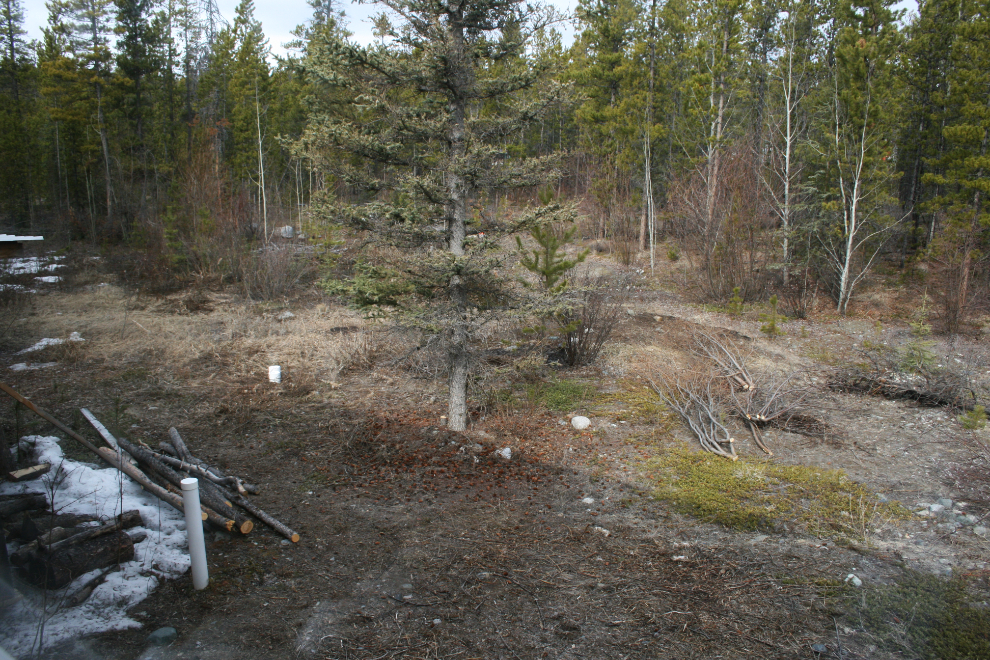
Every Spring, the septic field area flooded, and over the years I built it up with yard cleanup leaves, grass, willow cuttings, etc., to try to alleviate that problem.
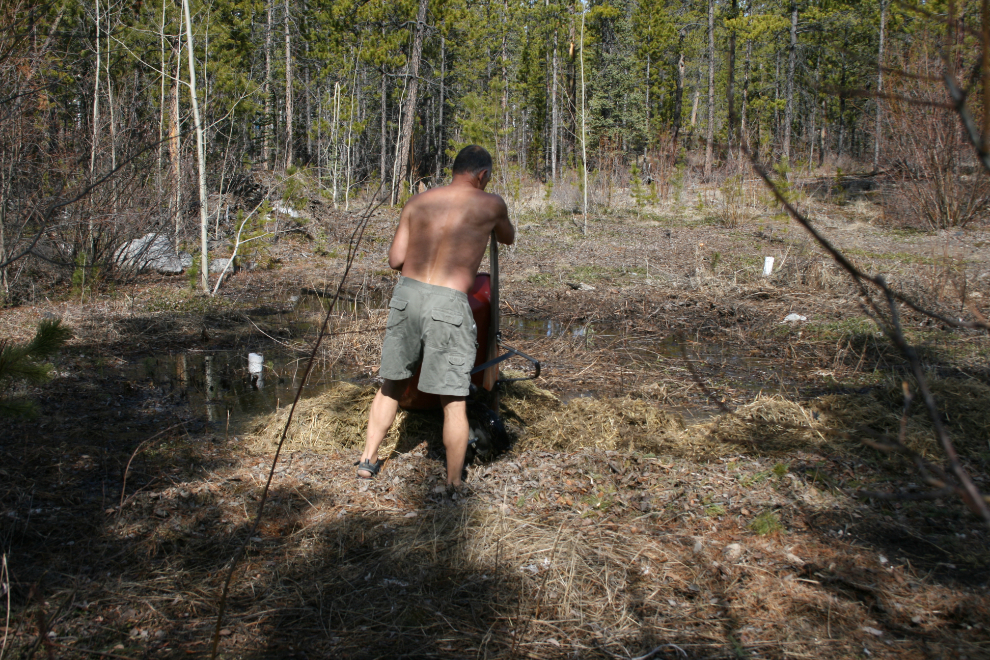
A septic field here has a life span of some 25-30 years, and in late 2019, 27 years after being built, it started giving us problems. The next summer we hired a contractor to build a new one, and on August 4th he started work. Everything looked very professional and we were looking forward to seeing the project completed. However, after getting the perc test done, he vanished, not replying to any of many phone calls and emails.
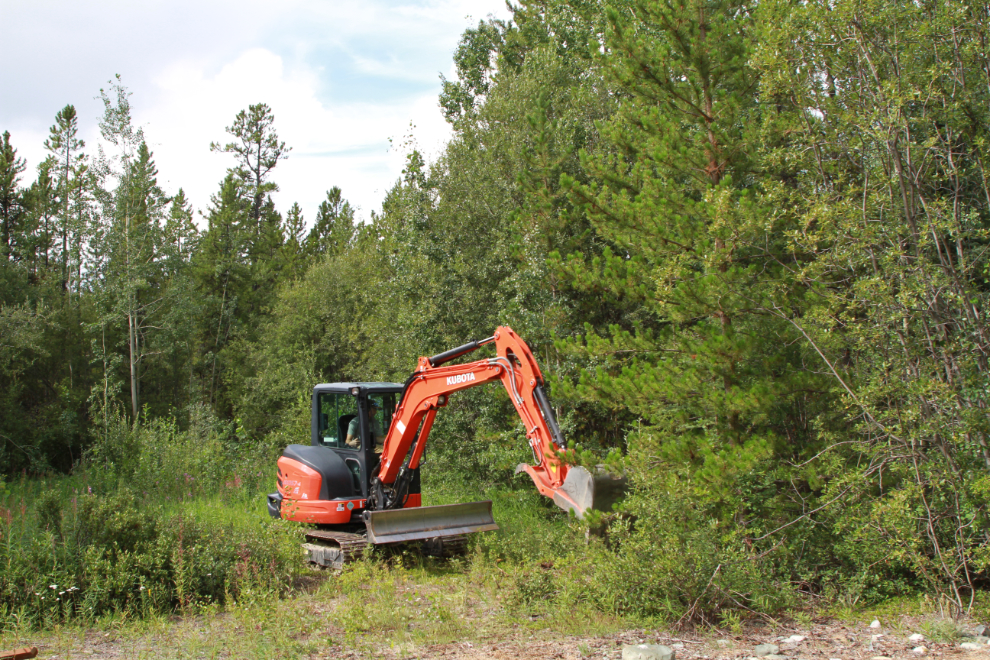
Cathy found an enzyme material that successfully extended the life of our system, but after being ghosted for months, we gave up on that contractor and hired a neighbour, Scott Mueller (Dirty Deeds Equipment Contracting), to do the job. On May 13th, he arrived to get started, re-doing the perc test.
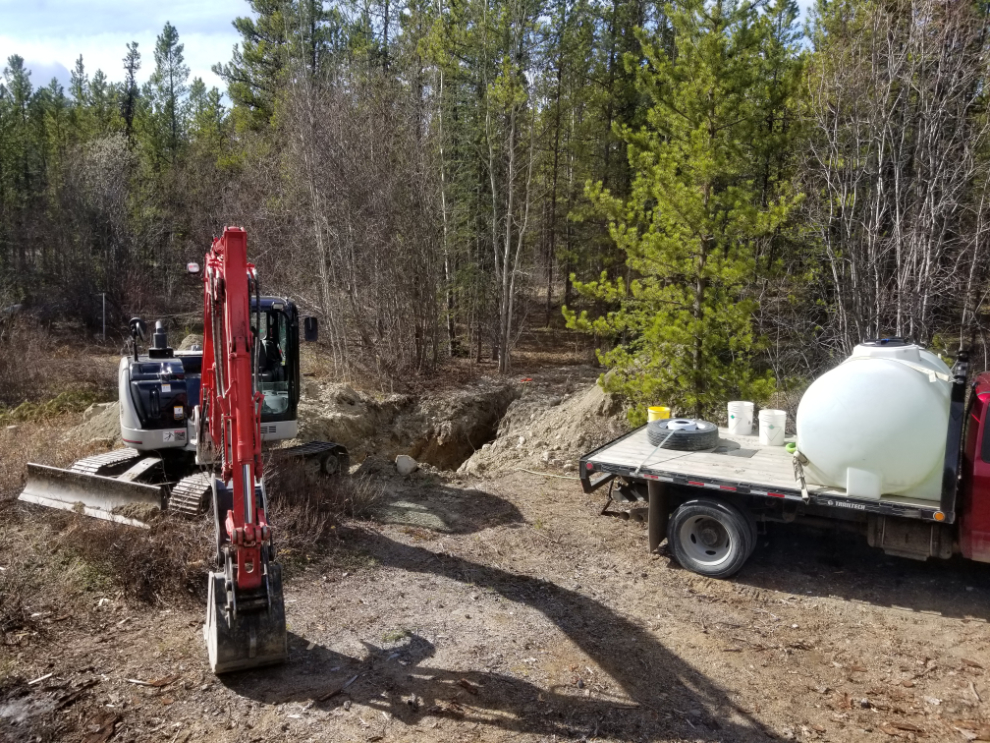
On June 14th all permits were in place and I shot a final “before” photo.
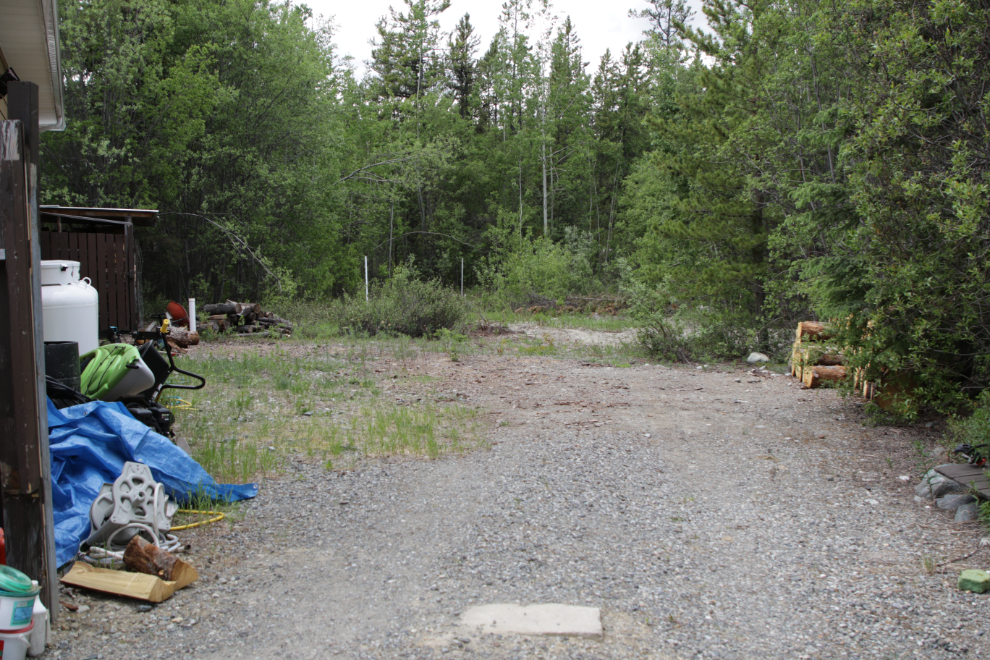
The big-ticket start to the project, an insulated 1,150-gallon fibreglass tank, arrived on June 22nd and was soon in the ground. The old system was kept functional and switchover only took a few minutes when the new system was complete.
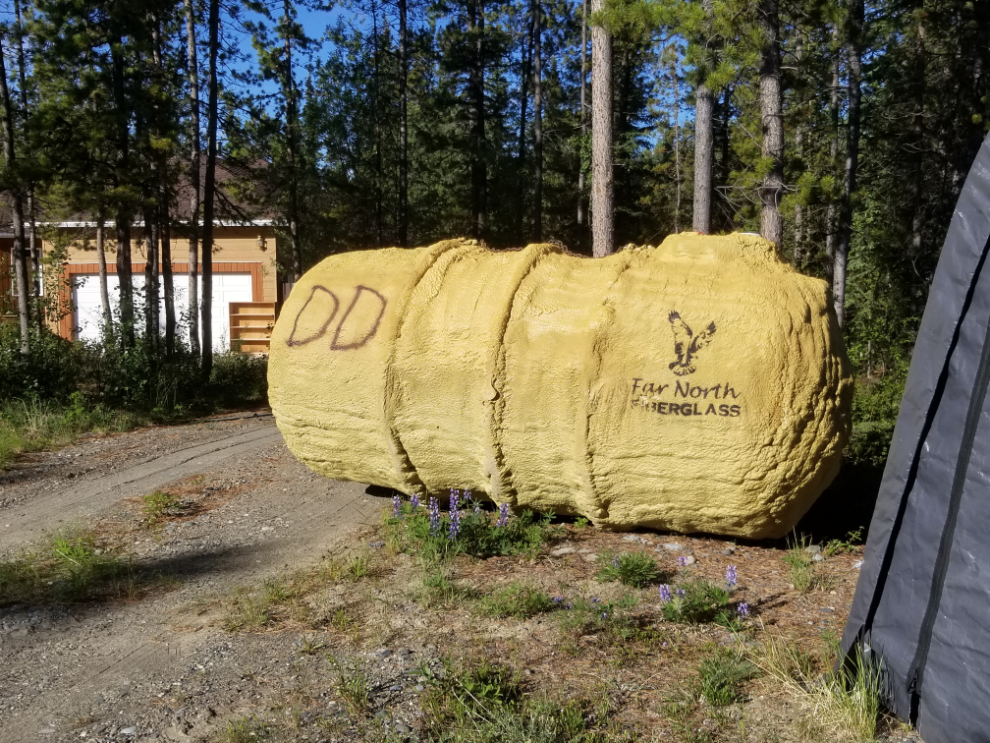
On June 26th Scott started digging the 41×36-foot absorption bed. There is pretty much no topsoil on the property – sand and gravel is what the glaciers left.
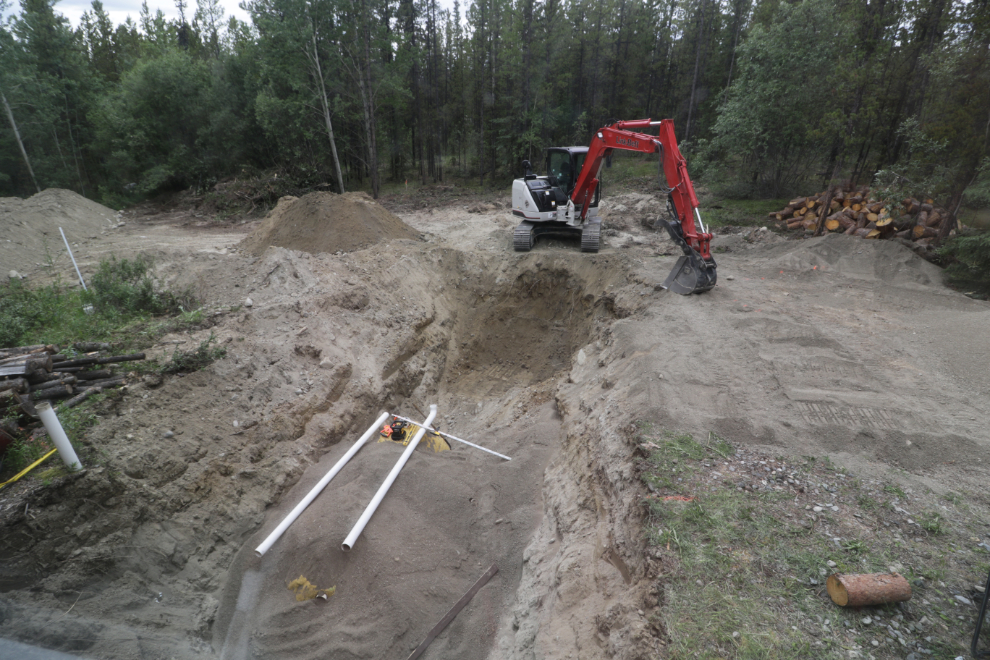
By June 30th I was starting to wonder if we should just extend the pit a bit and create underground parking for our vehicles! 🙂
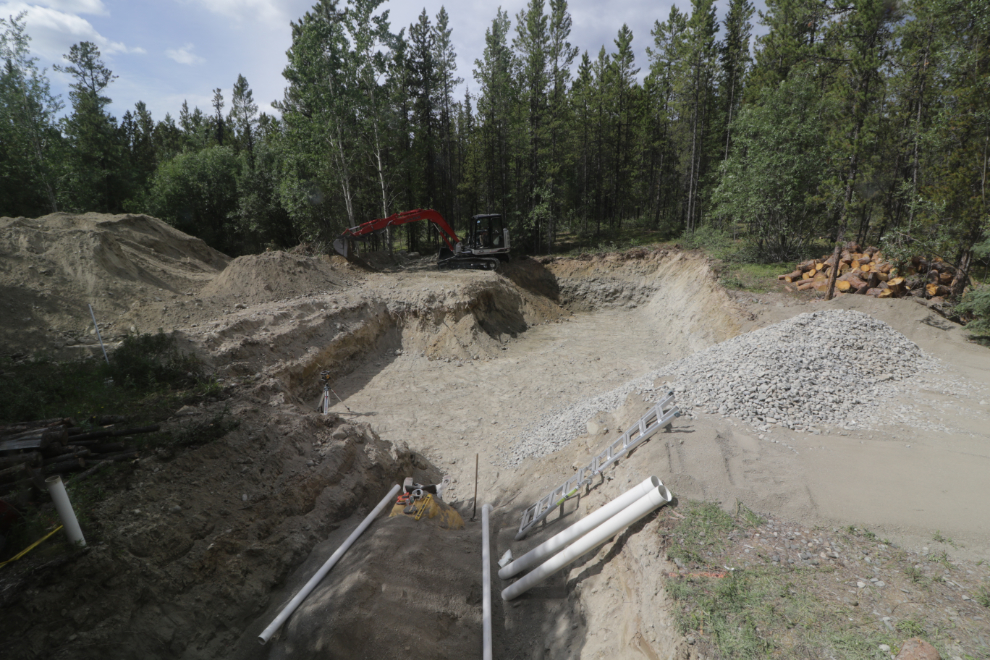
On July 1st the drain-rock bed was placed.
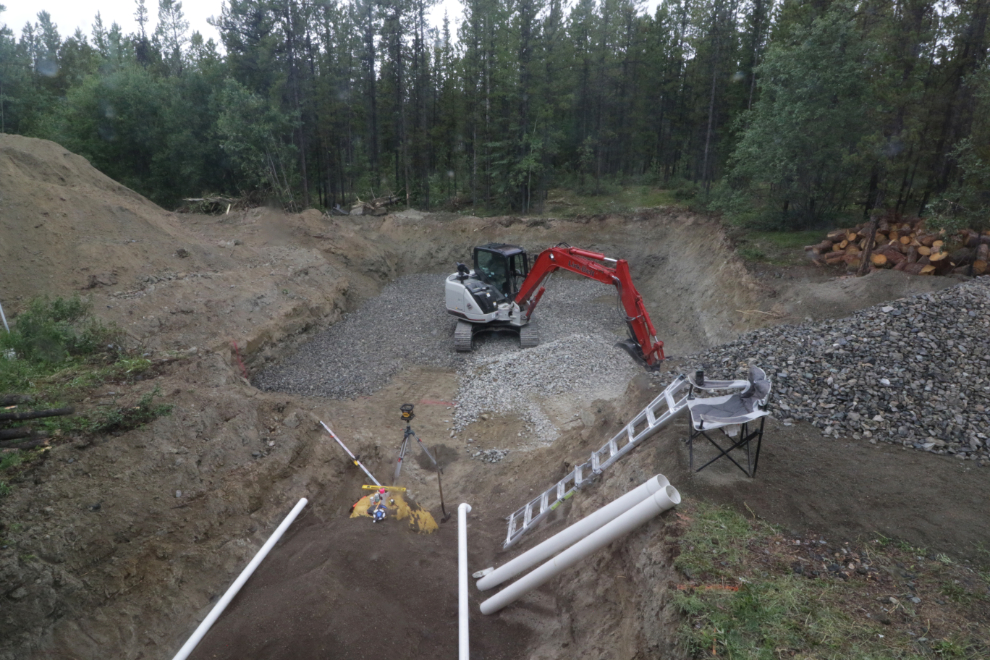
Laying the pipe and covering it with more drain rock on July 4th. By this point I was convinced that Scott is a perfectionist and I really enjoyed watching the progress.
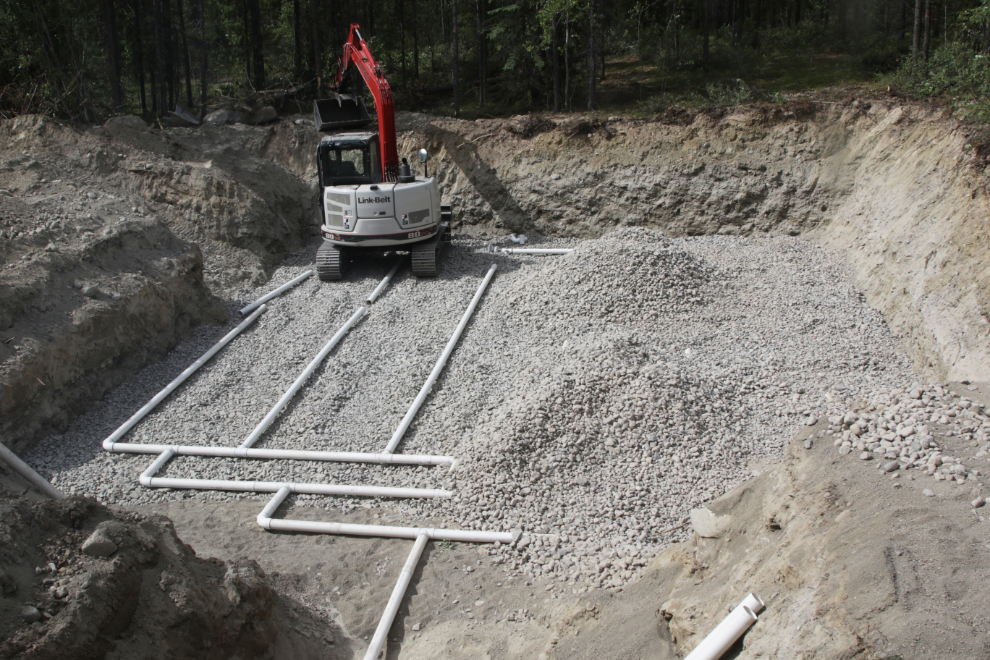
The next day, the mat was laid and replacing the massive pile of dirt sitting off to the side could start.

With the old system still working okay, we were in no big hurry, so Scott went off on other work for a couple of weeks. On July 17th, torrential rains proved the drainage capabilities of the remaining hole, but turned the area into a quagmire that was unworkable.
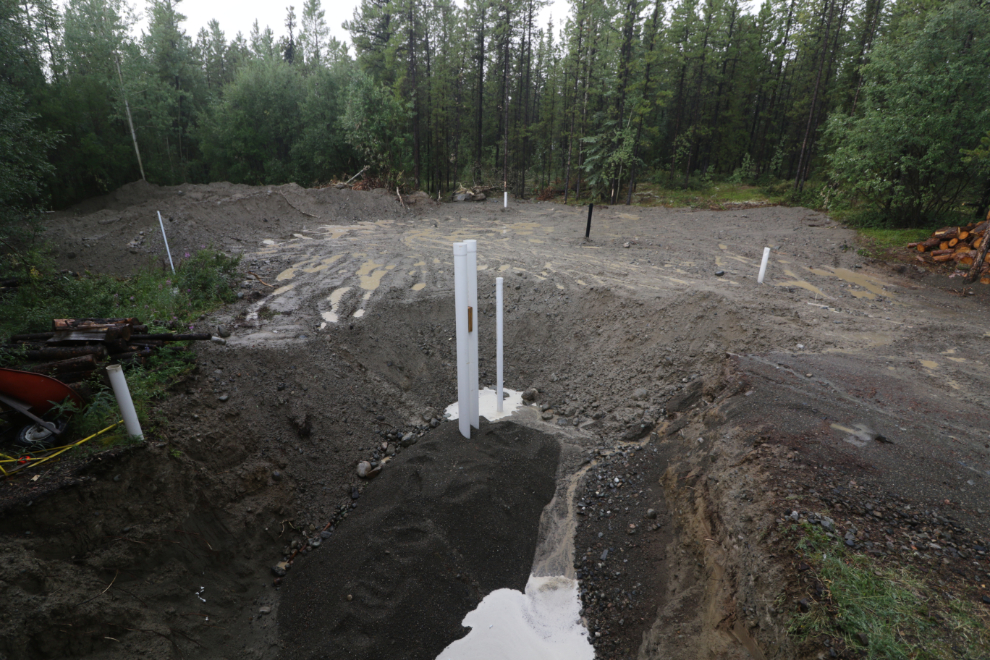
On July 19th, the new system was complete and hooked up. There was still lots of cleanup work to do, though, and the old system needed to be pumped out and broken up.

It had been clear for a while that looking out onto a vast gravel pit wasn’t going to work for me, and I had started thinking about creating a garden with native shrubs, flowers, and other plants that would be bee friendly.
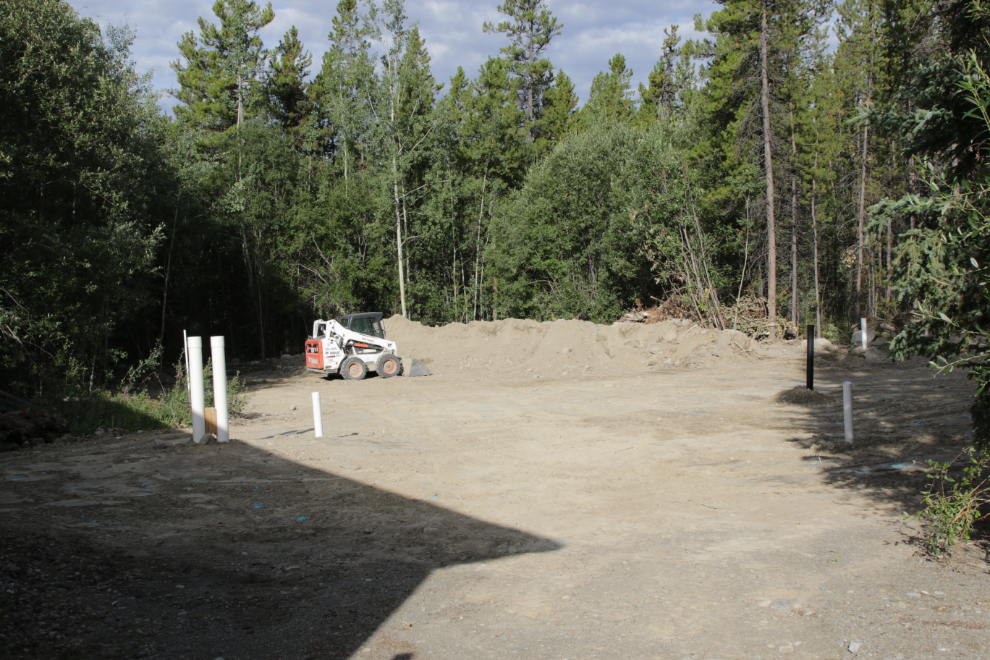
It soon became apparent that making a plan beyond that basic concept was beyond my abilities, so I went to Decora on July 20th and told them my idea. The folks there were great. Early on in our discussion, it was pointed out that this would be an expensive project. When I replied that I didn’t much care what it cost, things progressed nicely and I soon had the first Tracker-load of plants, starting with spirea, Ninebark, and potentilla as the initial anchors to the garden. My plan involved major participation in the planting and maintenance of the garden being done by Mother Nature once I had the anchors planted.
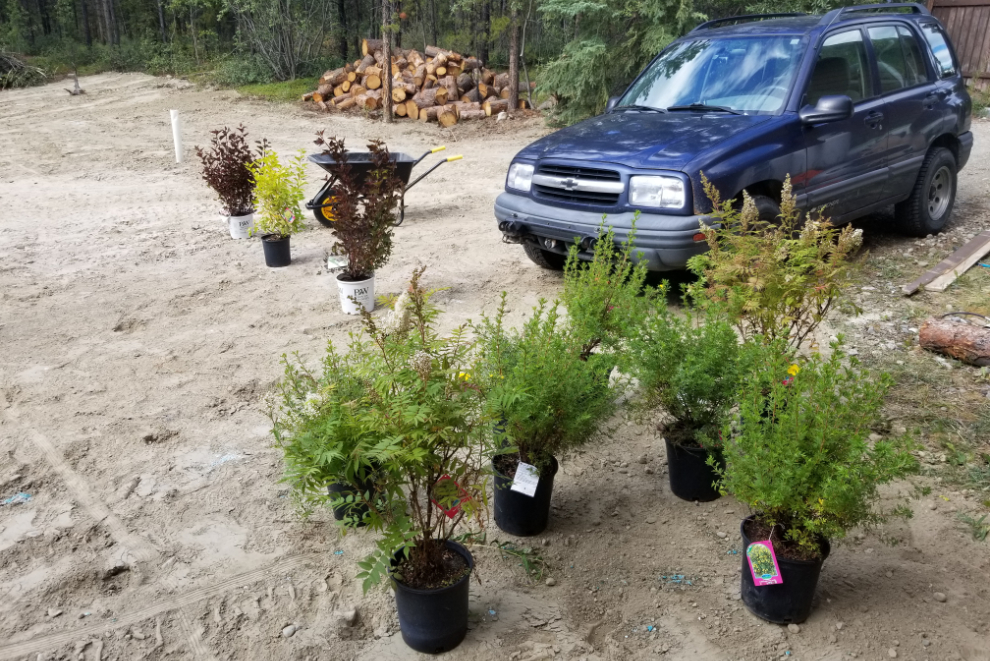
It took a couple of days to come up with a basic layout that I was happy with, with the views from the master bedroom and garden approach being equally important. Three Ninebark (2 dark red Summer Wine and 1 yellow-green Dart’s Gold) are the first plants as you approach, with spirea angling off to the right and 2 Abbotswood potentilla beyond them and 4 Goldfinger potentilla above them.
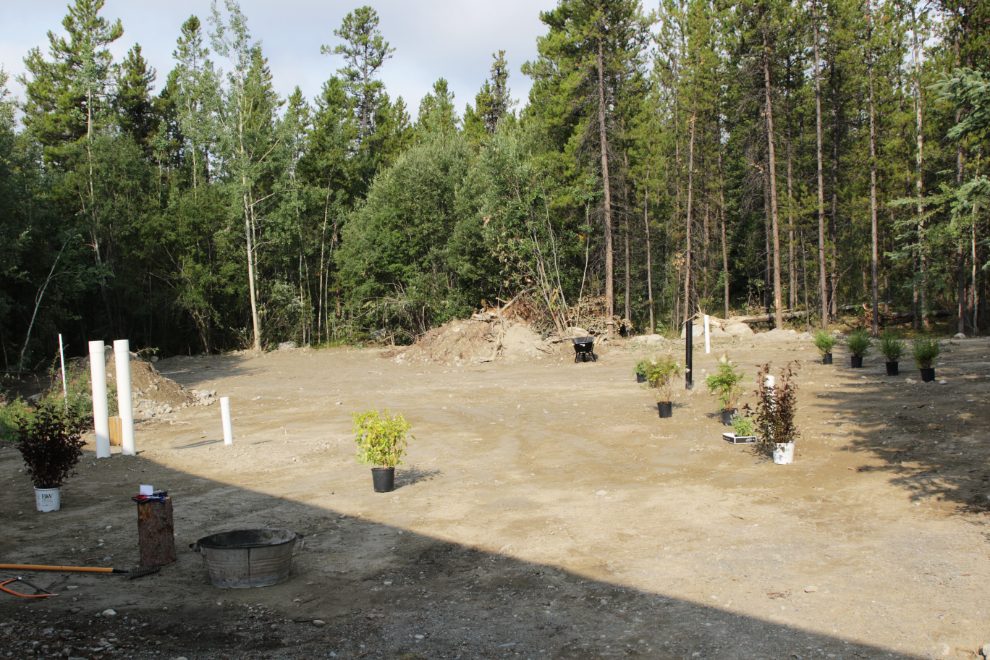
It was immediately apparent that planting anything in this gravel pit was not going to be easy. Every hole requires a pick and shovel, and a lot of bagged soil. The next photo was shot on my second day, July 25th.
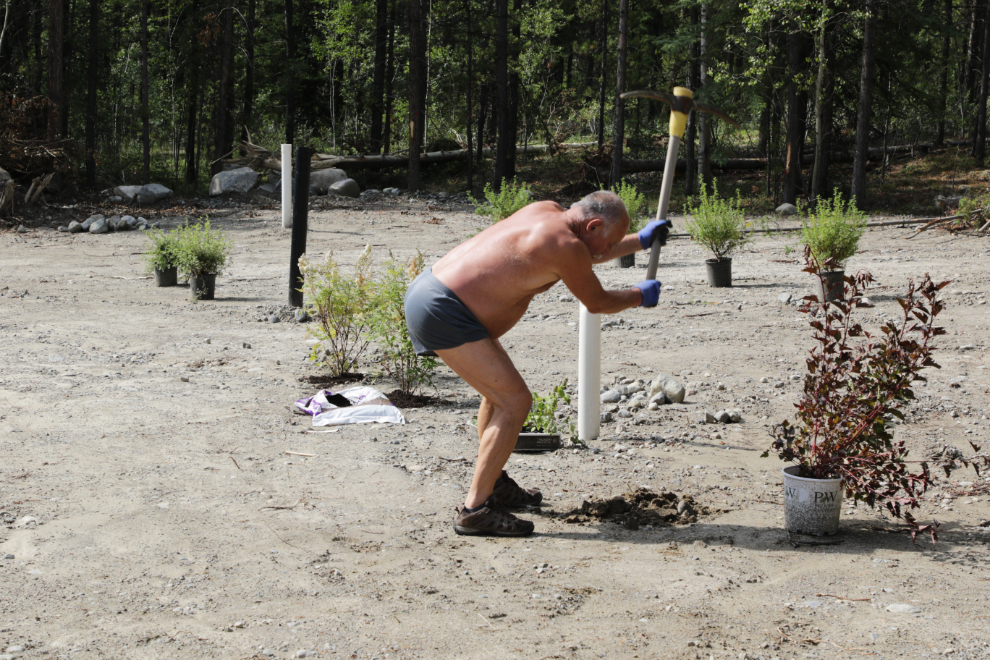
Before they were even in the ground, though, the spirea were being visited by large numbers of pollinators, mostly bees (the upper one in the next photo) and hoverflies (the lower one), so I was sure the work would be rewarded.
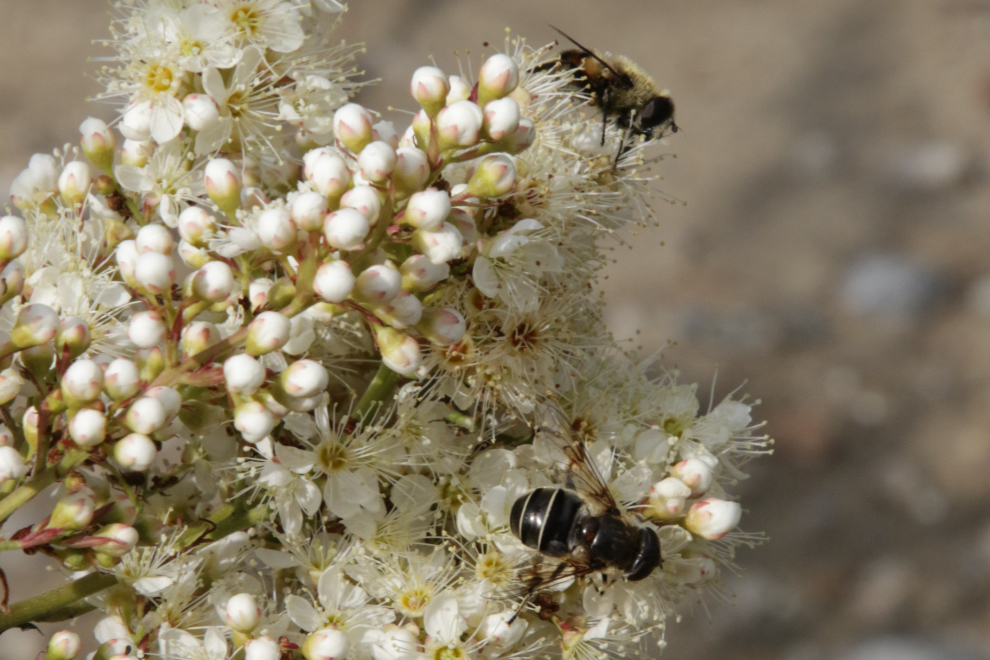
The front of our property had only received minimal landscaping, and on the 25th I decided to expand my bee garden work to the particularly ugly banks along the driveway nearest the house.

By July 26th I may have been wondering what I had gotten myself into. As well as the plantings there were trees to buck up, brush to clear, and a whole lot of dirt and rocks to move, especially around the edges of the garden.
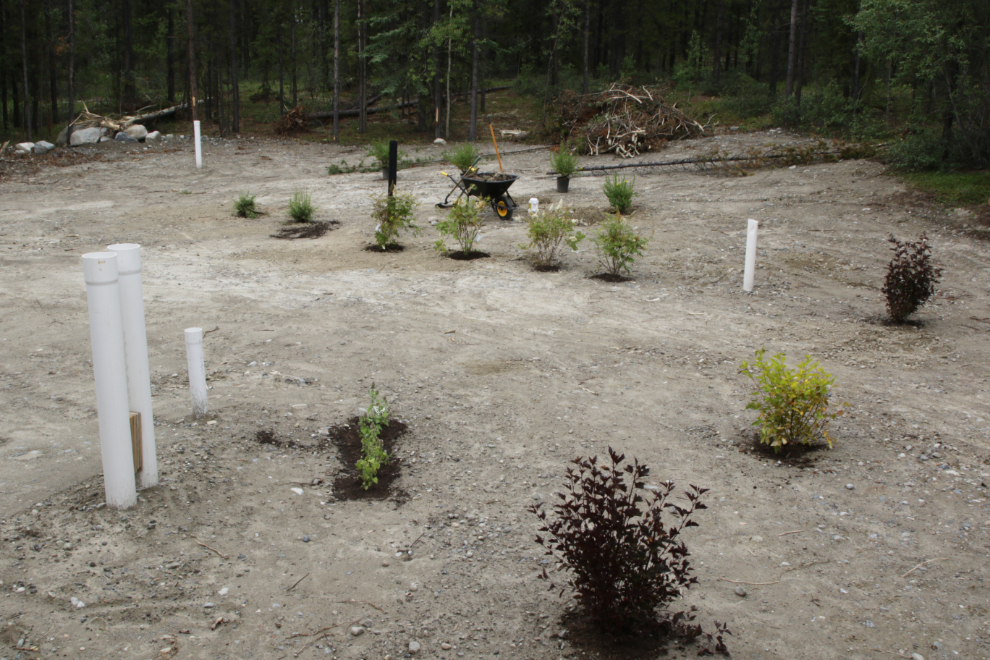
After about a week cleaning up the bee garden area, I started building two rock walls along the driveway banks on August 3rd.
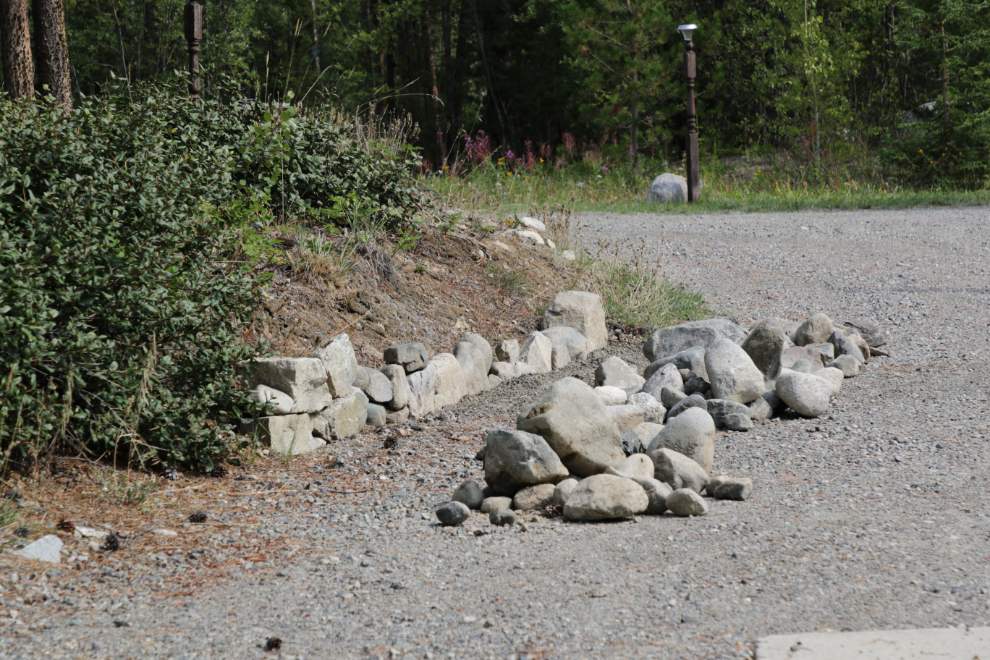
The next day, the vacuum truck arrived to clean out the old septic tank so it could be broken up and collapsed when Scott returned in a couple of weeks.
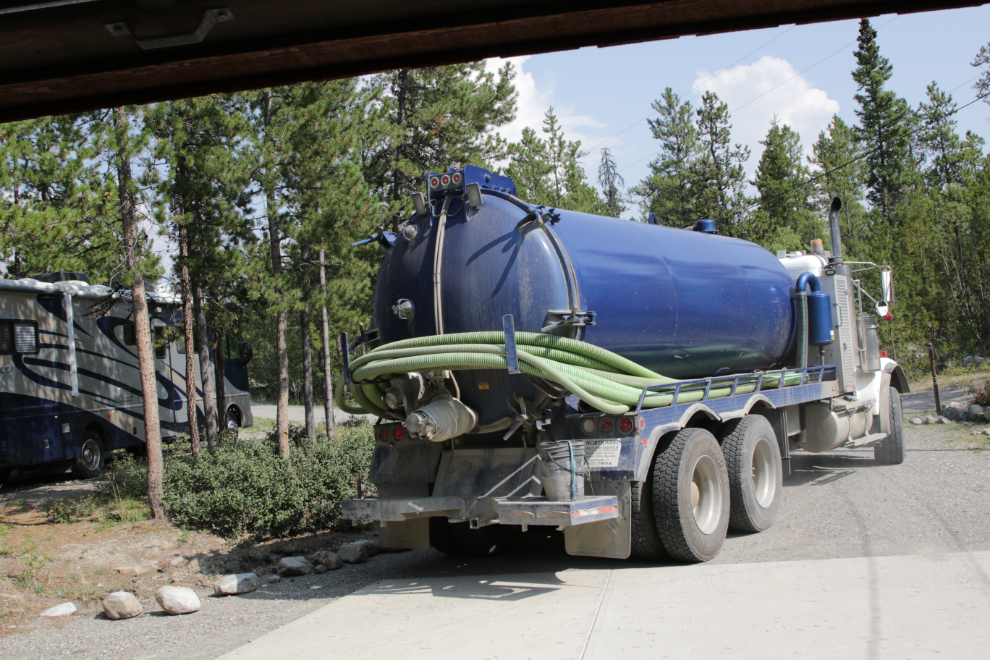
With that job done, I had to formulate a plan for Scott’s return, to get him to do things that were beyond me. I had some chainsaw work to do here, and I had to plan which of the large rocks I wanted moved, and to where.
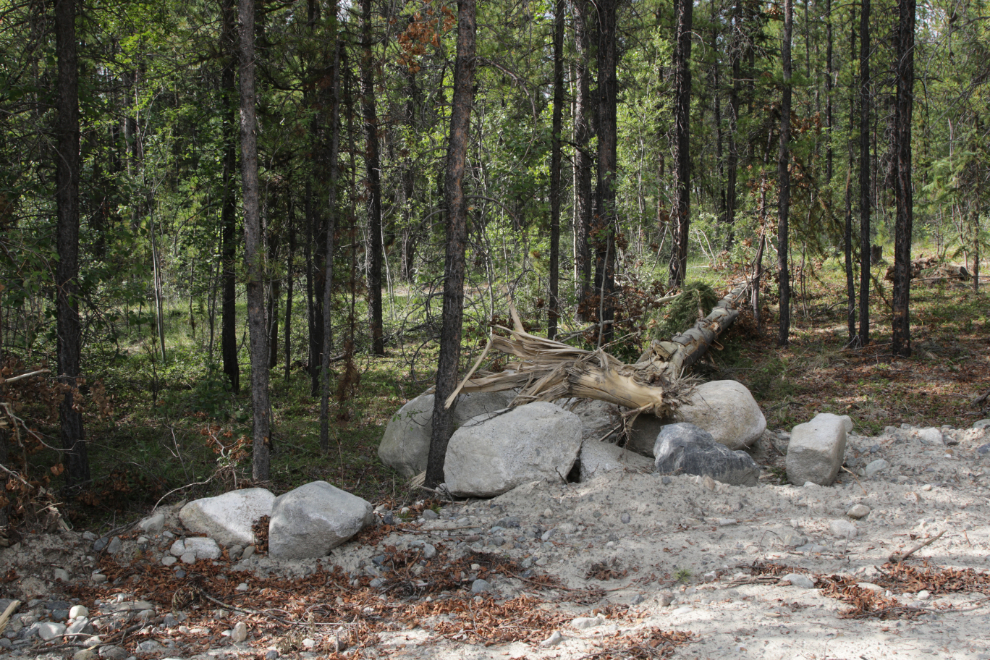
I had no idea what to do with this tangled mess of dirt, rocks, and small trees.
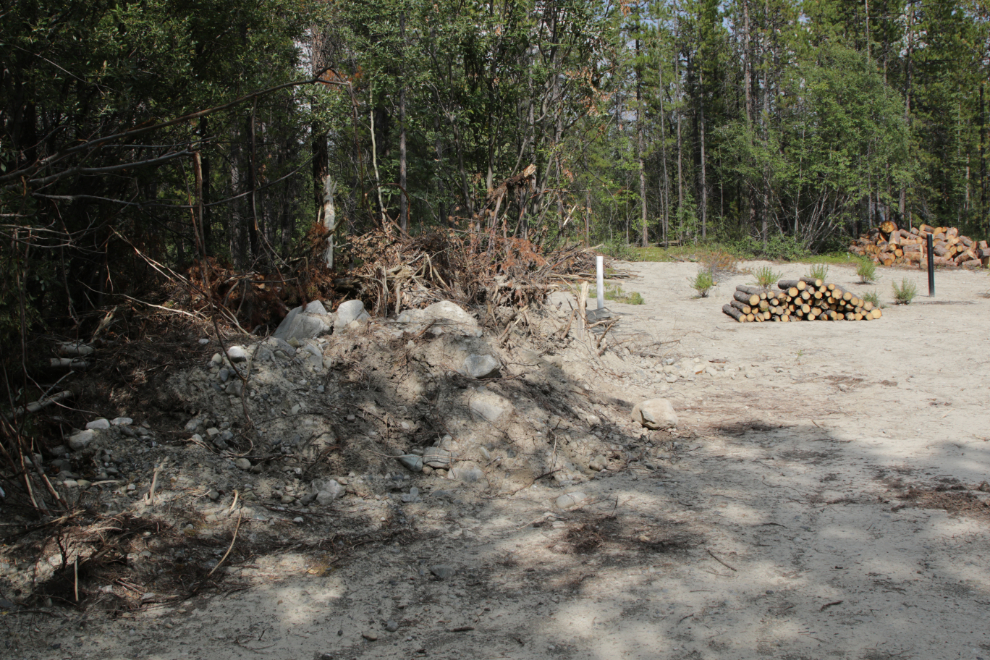
A look from a different angle, still on August 4th, trying to keep everything balanced.

On August 7th I hauled the first load of brush away – it felt really good to have that mess gone. I was also working on splitting and moving a large pile of firewood.

I had bought an Amur maple for the far end of the main part of the bee garden, but couldn’t plant it until Scott was finished. Cathy thought it would look great in front of the living room window, so I bought a much larger one and planted it on August 8th.
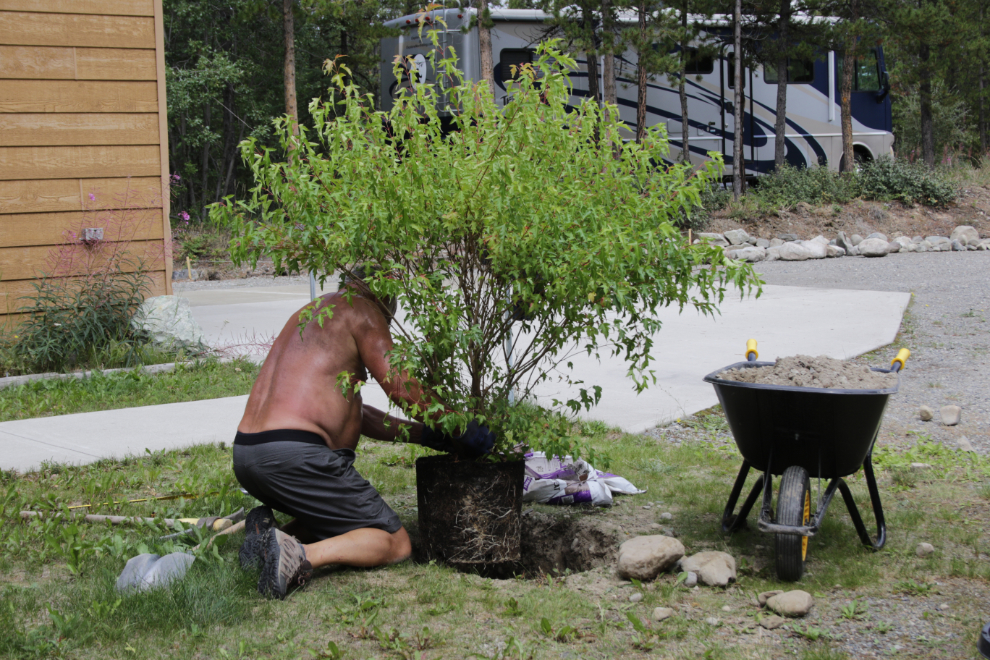
With the maple in place, I decided on August 13th to clean up all the front beds, with 5 Mugo pines as the anchors. I had never been happy with the wood barriers I built around them, so also started replacing them with rock.

The weather had been wonderful for weeks, and I had lost almost 20 pounds and had the best suntan ever. By August 16th, though, I knew it would soon be coming to an end and got a bit manic. Tucker and I made 3 trips out into the Copper Belt to gather rocks and plants.
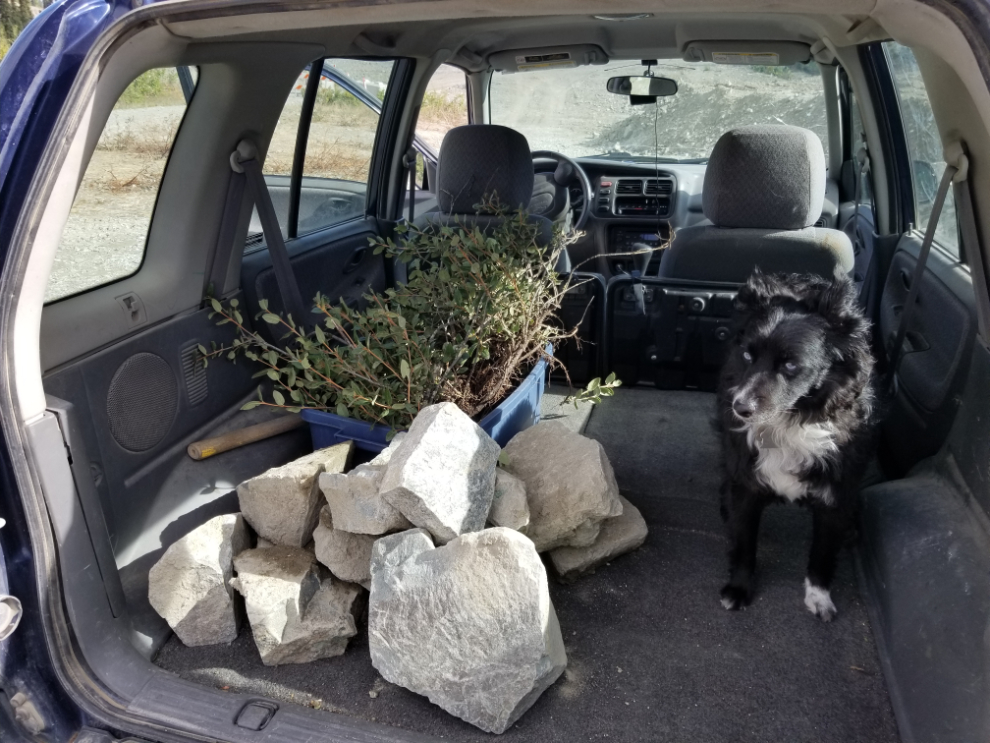
And then I had some wild transplanting to do – dandelions, fireweed, and Labrador tea in the next photo…
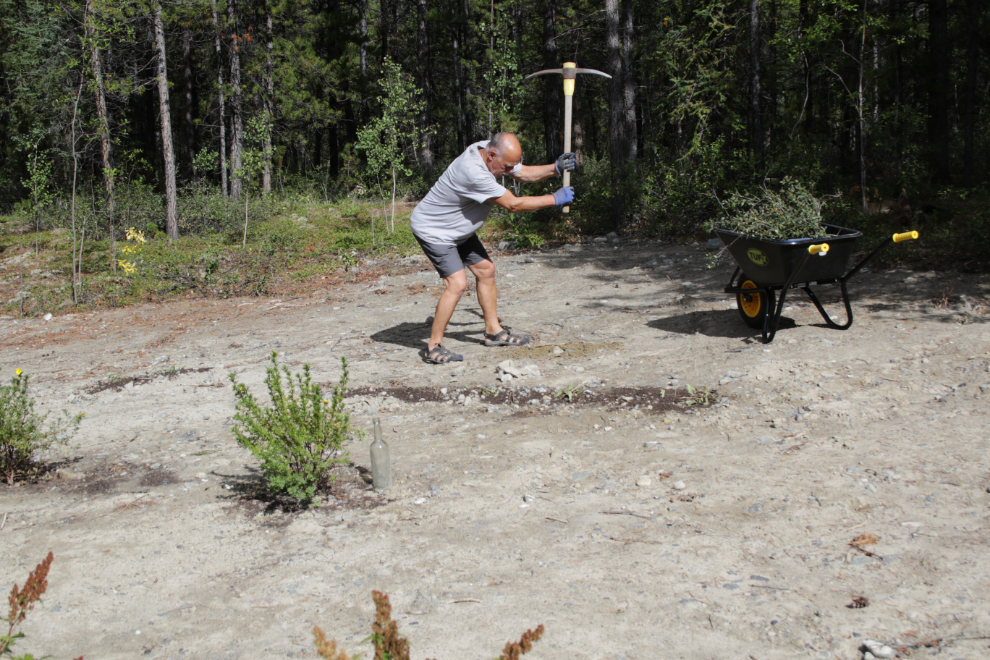
…and then a Subalpine fir, my favourite evergreen and the Yukon’s official tree, at the foot of the garden area.
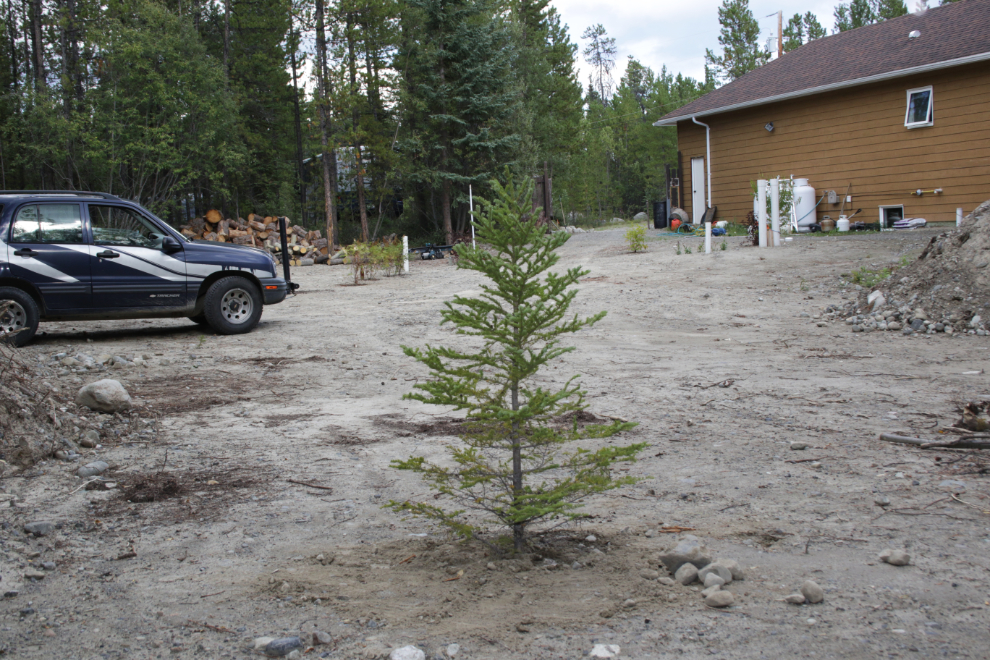
There were some rocks I wanted to move from the bee garden area to the driveway rock walls but they were too large to lift into the wheelbarrow. I found a broken wheelbarrow with a steel bucket – using pieces of the metal frame I fashioned a pull-handle on it, then was able to roll the rocks into it and drag them close to where I wanted them, from where I could roll and pry them into position.
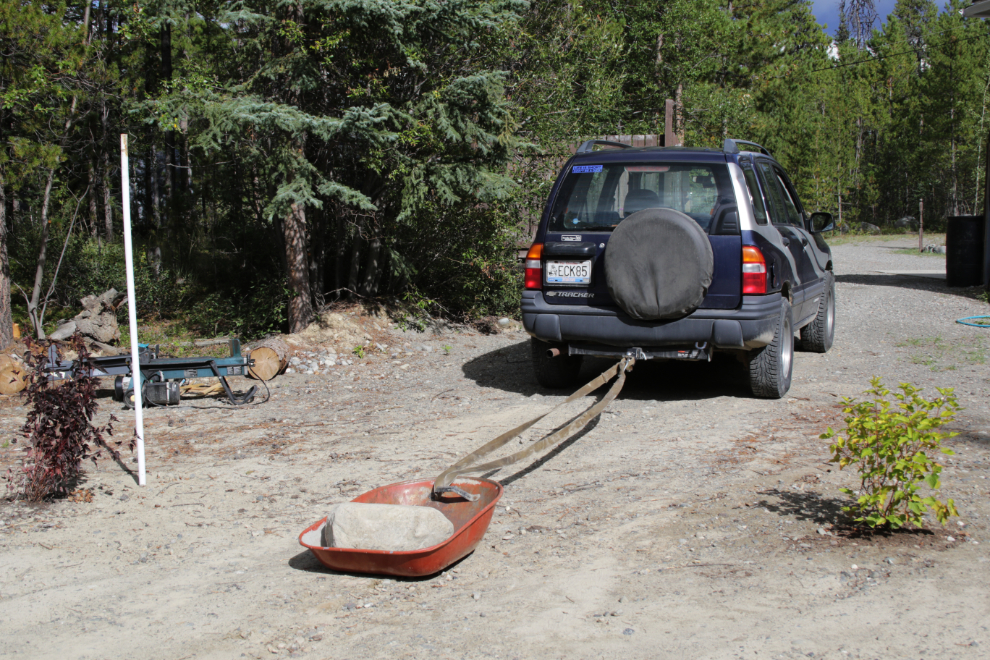
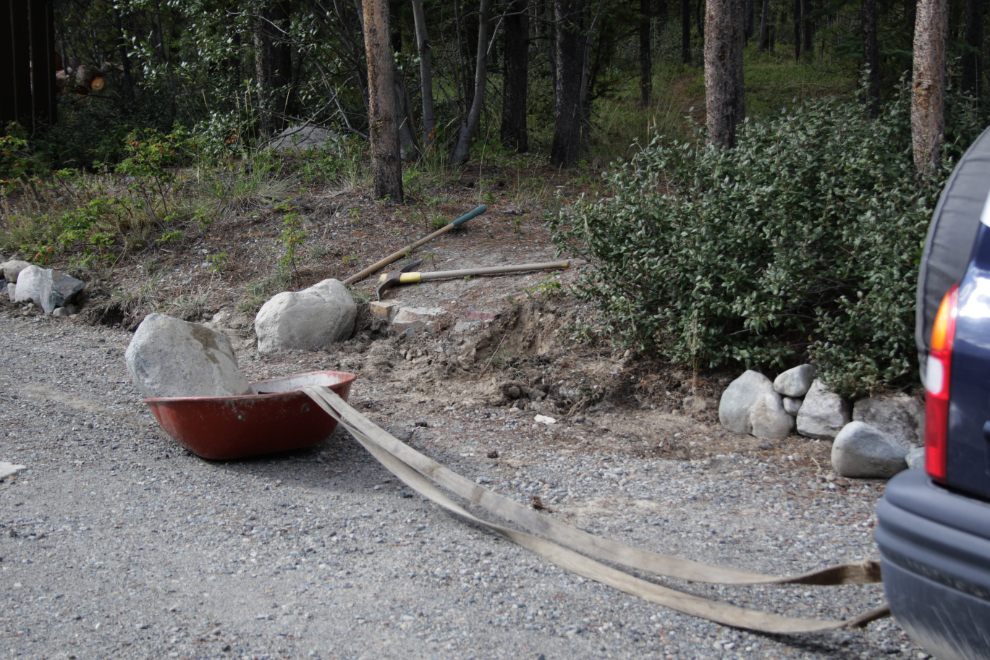
On August 18th Scott returned to complete the heavy-equipment part of the project. The first priority was to collapse and bury the old septic tank so we could get that signed off.

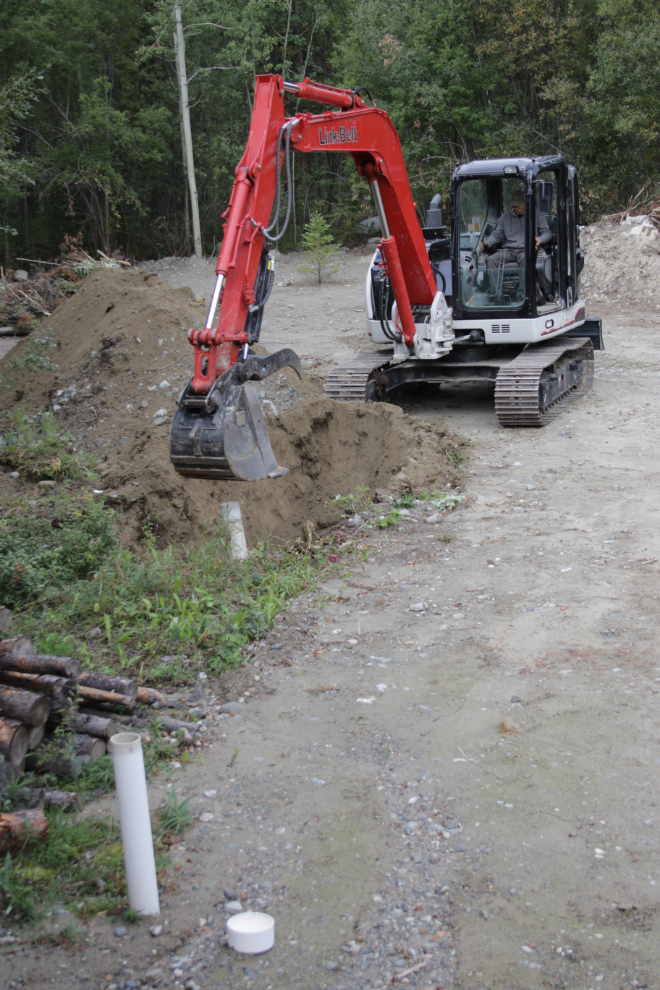
I had asked Scott about moving a few rocks that were too large for my stoneboat, and he made quick work of that.
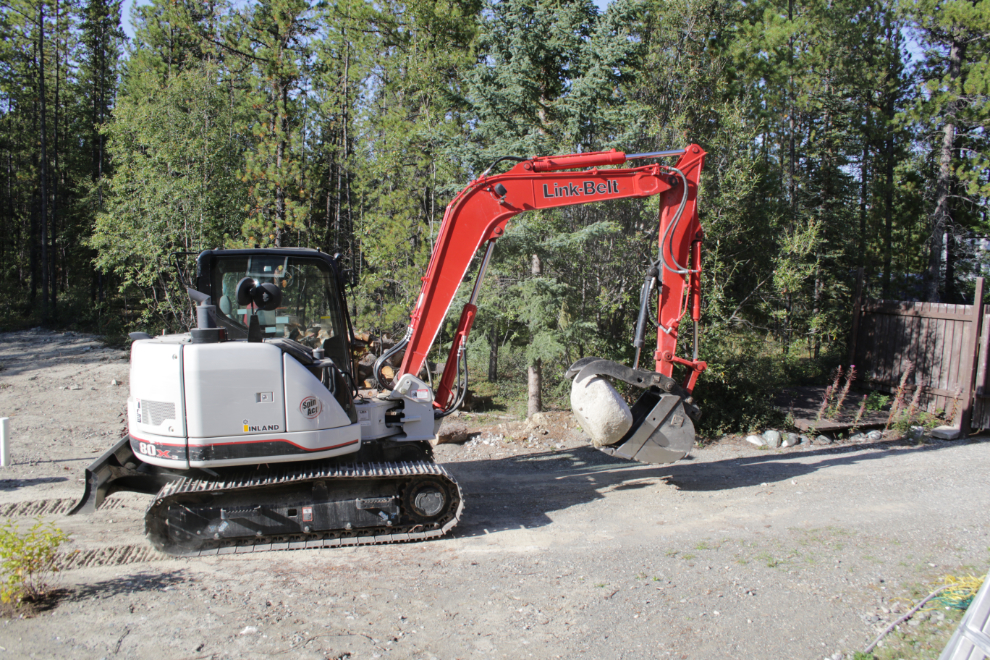
He offered to deal with the debris pile I couldn’t figure out, and that was soon a big issue off my plate.
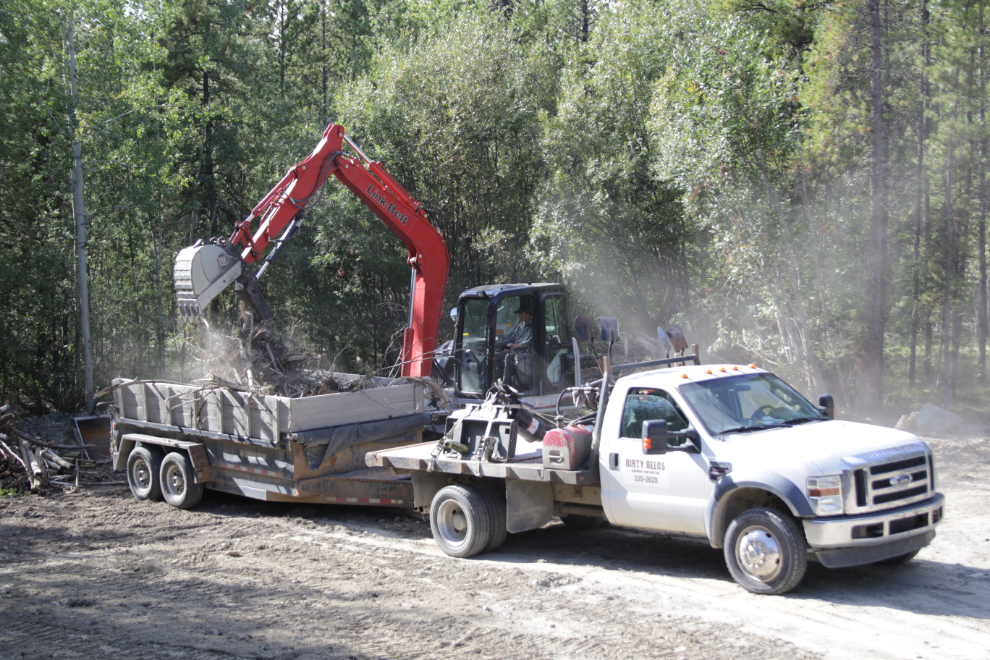
Before leaving, Scott did a bunch more grading that I hadn’t expected, then the next day I bought another load of bagged dirt and got that smaller Amur maple in the ground, between the Subalpine fir and the main part of the garden.
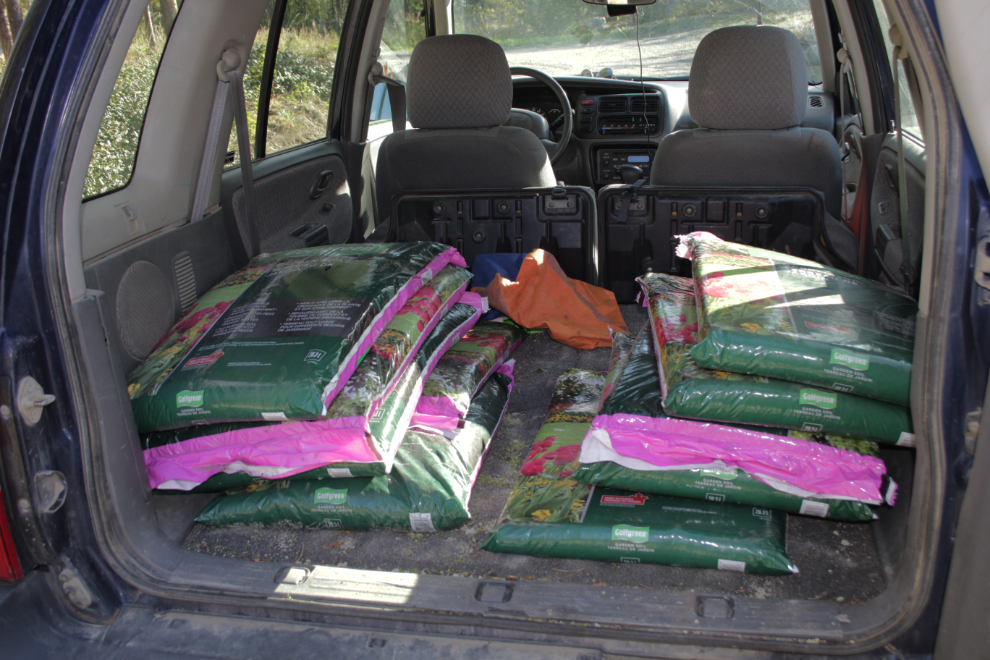
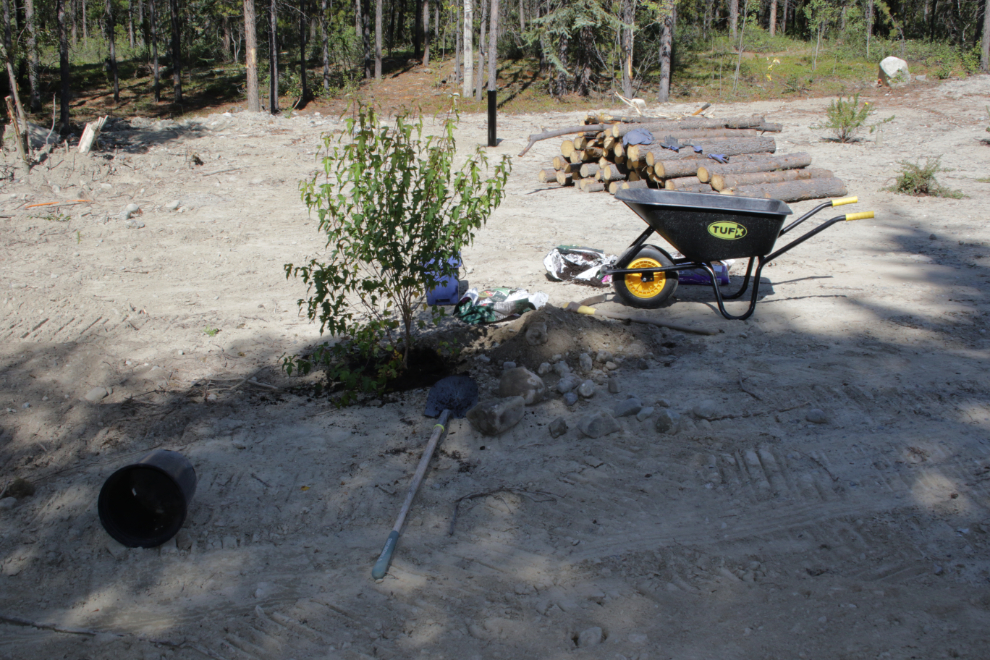
I kept busy on the project for almost two weeks, then I saw an ad for 50% off trees and shrubs at Yukon Gardens, so on September 1st I was there first thing in the morning. I soon had two carts full, mostly with more Goldfinger potentilla for along the driveway.
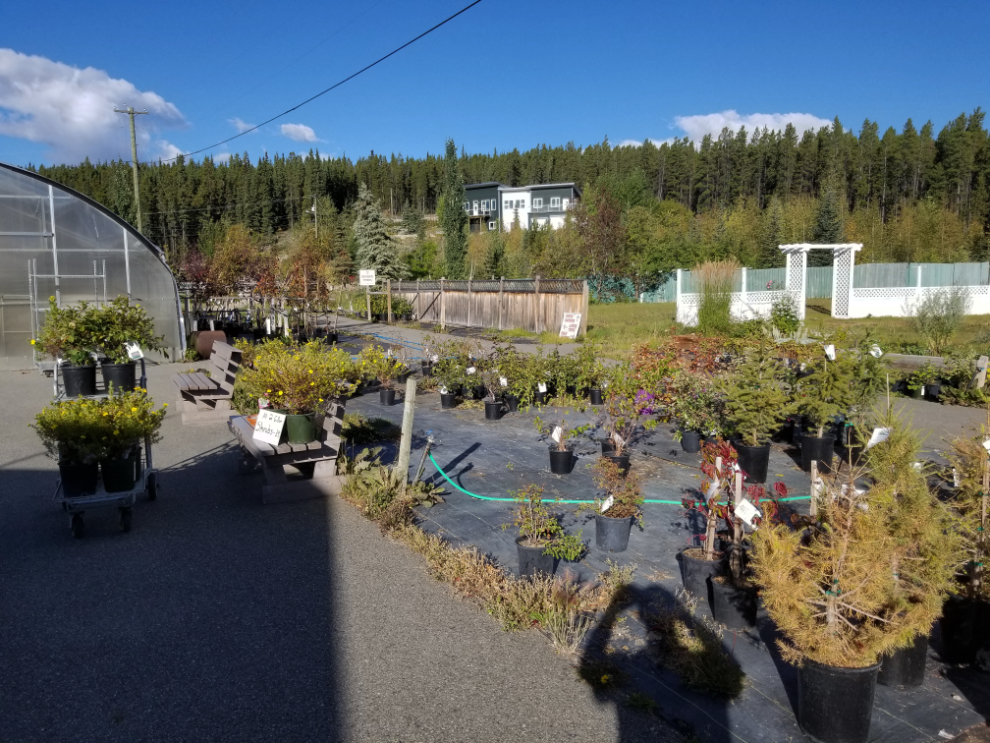
A bee bath – what a great idea! I bought two of those terra cotta saucers.
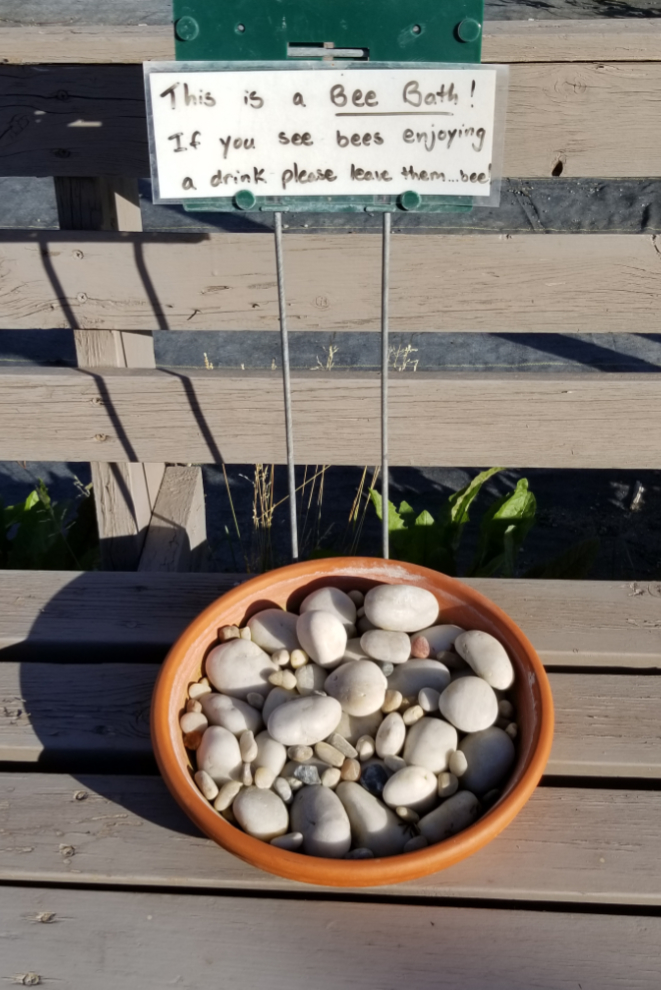
The Tracker had a good load when I left Yukon Gardens 🙂
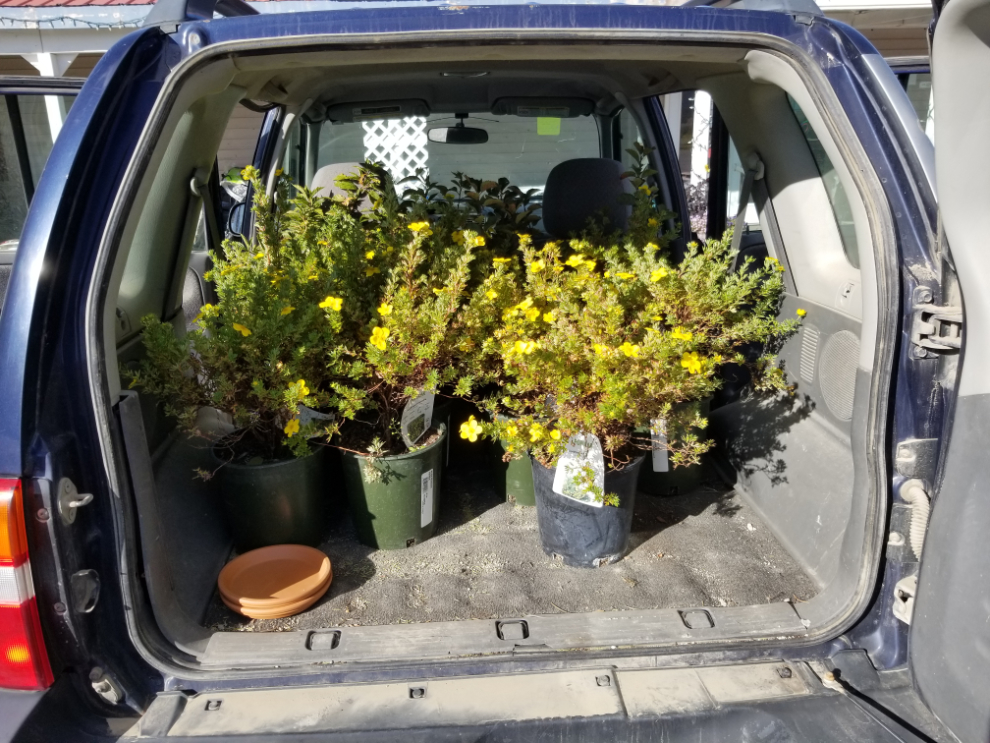
Sorting that load – in the foreground are 4 Saskatoons for the bee garden. Out of sight in the distance are two Double flowering plum trees for further up the driveway.
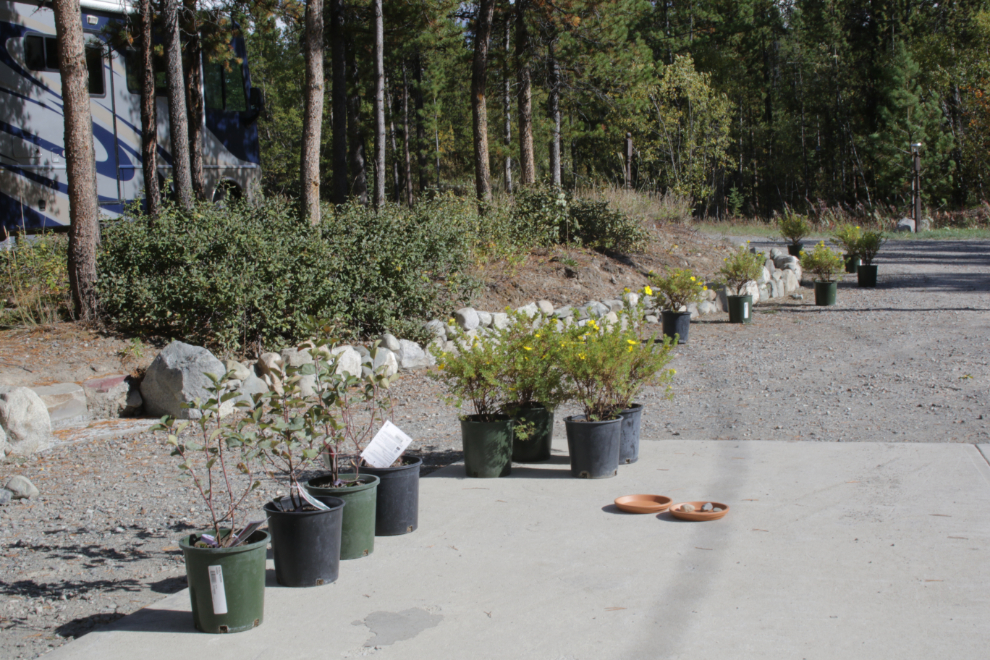
Planting the potentilla took a couple of days.
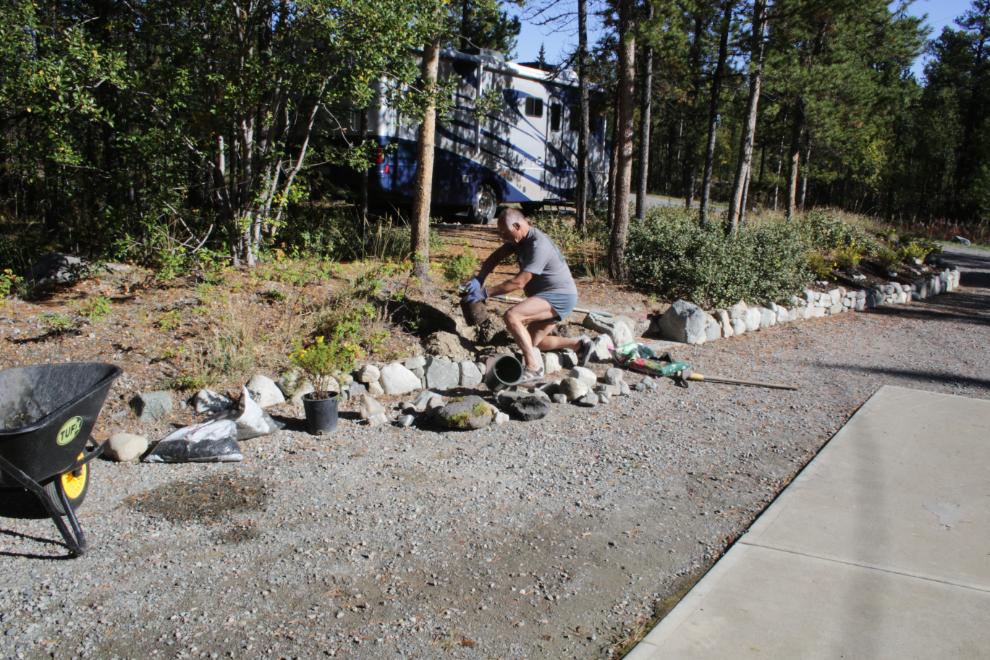
Then I got the Saskatoons done.
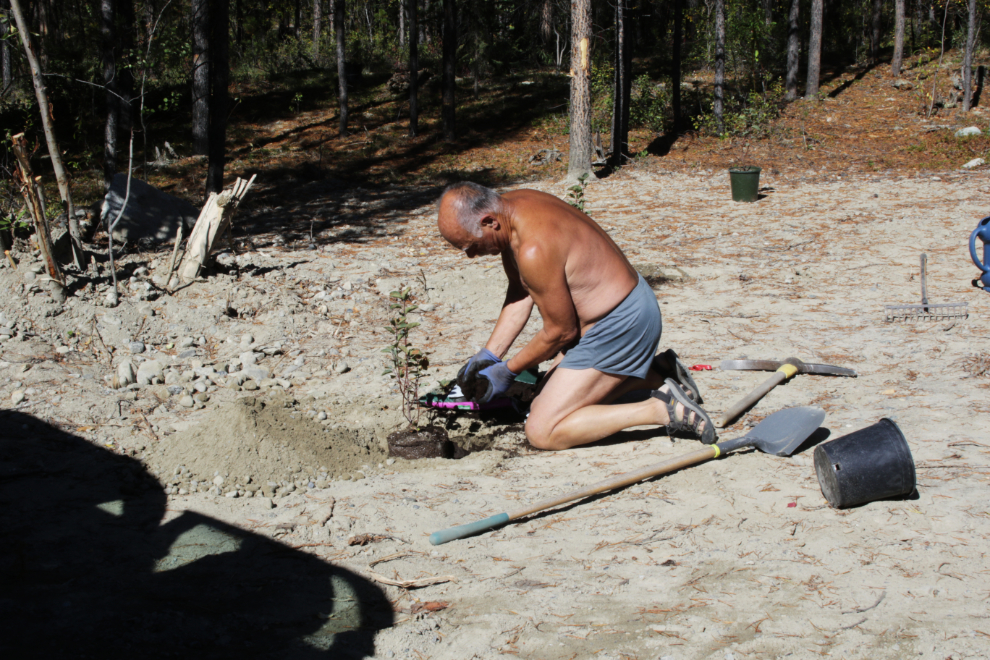
On September 4th I got back into bucking up firewood – this pile was trees that were felled for the new septic field.

I said I was finished getting any more plants, but then we saw an ad for haskaps at a good price ($10 each), so I went to his house and got ten, of two varieties for cross-pollination purposes.
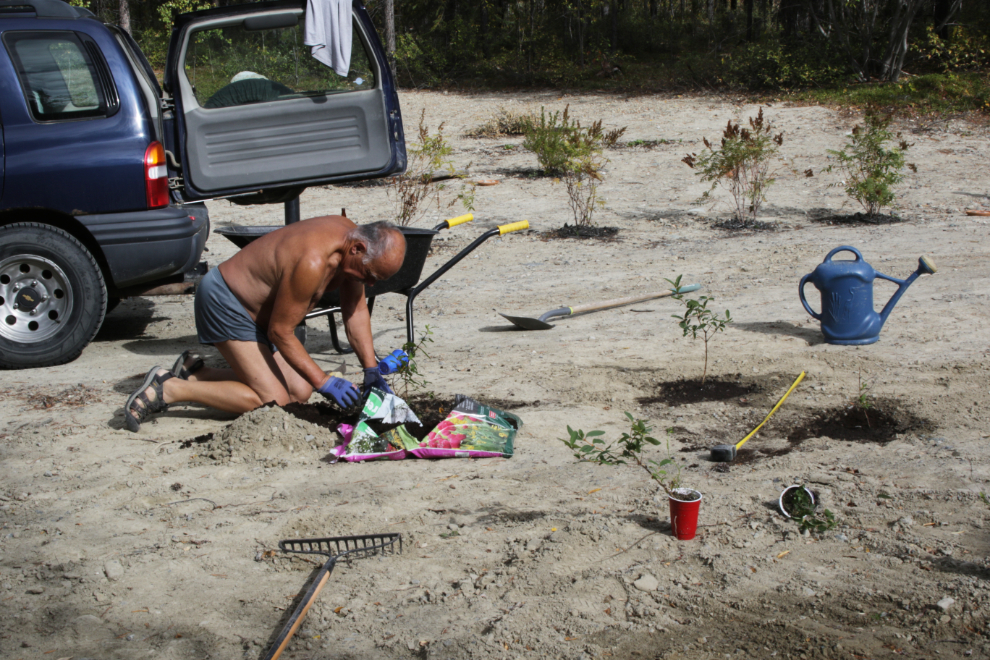
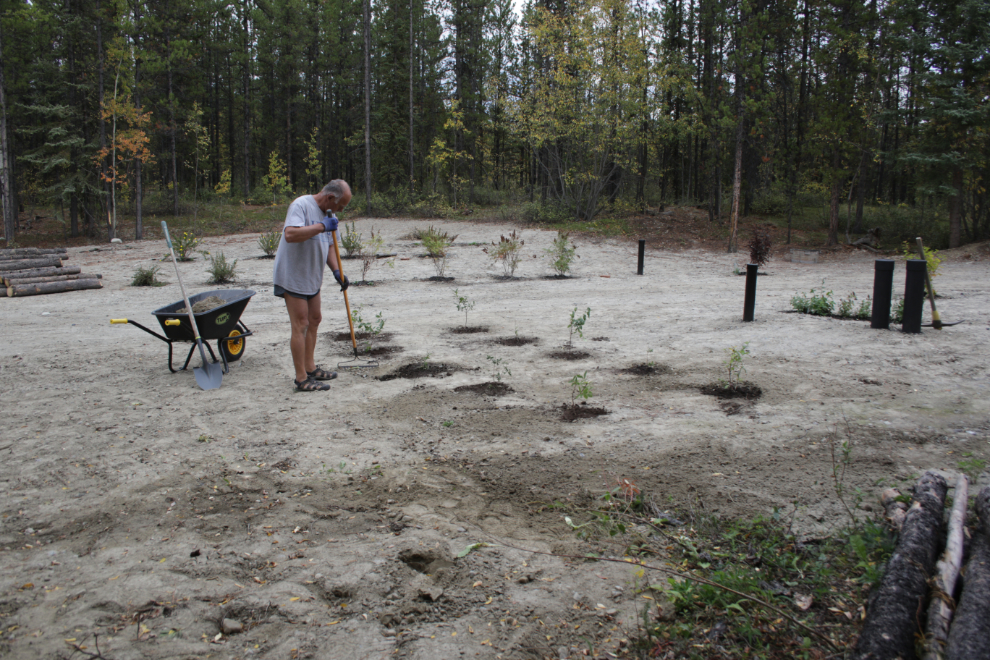
While I was planting, so was Mother Nature due to the near-record-breaking warmth. In the next photo are dandelions, but fireweed, lupine, and Iceland poppies were also popping up – and the lupine and poppies were even blooming!
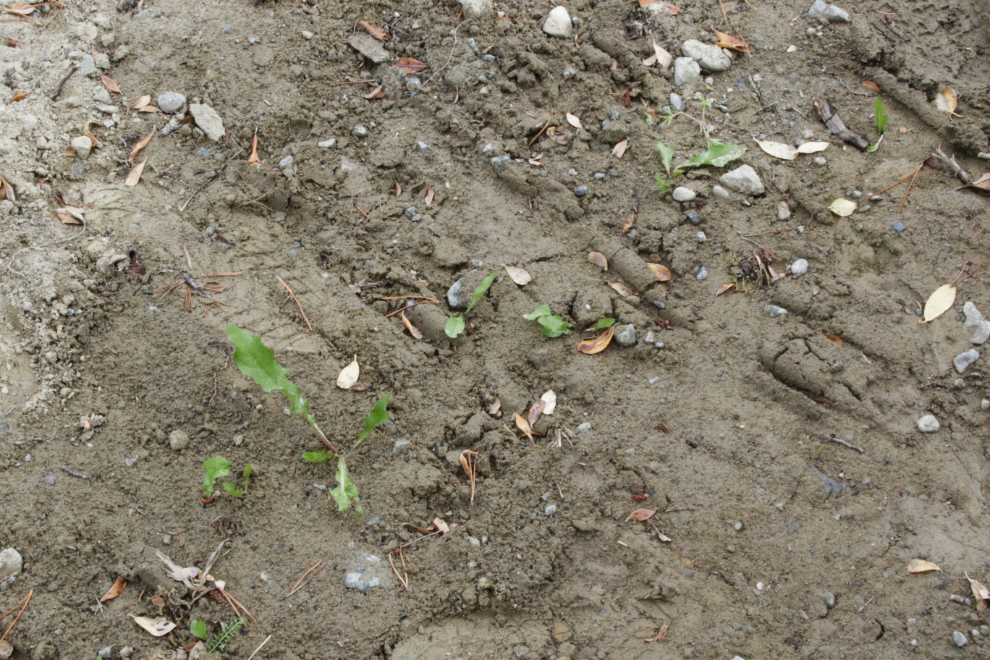
By September 12th I was getting very tired, but I needed the remaining wood out of the middle of the garden, so I moved it to a spot right by the woodshed, to buck up later. Perhaps much later…
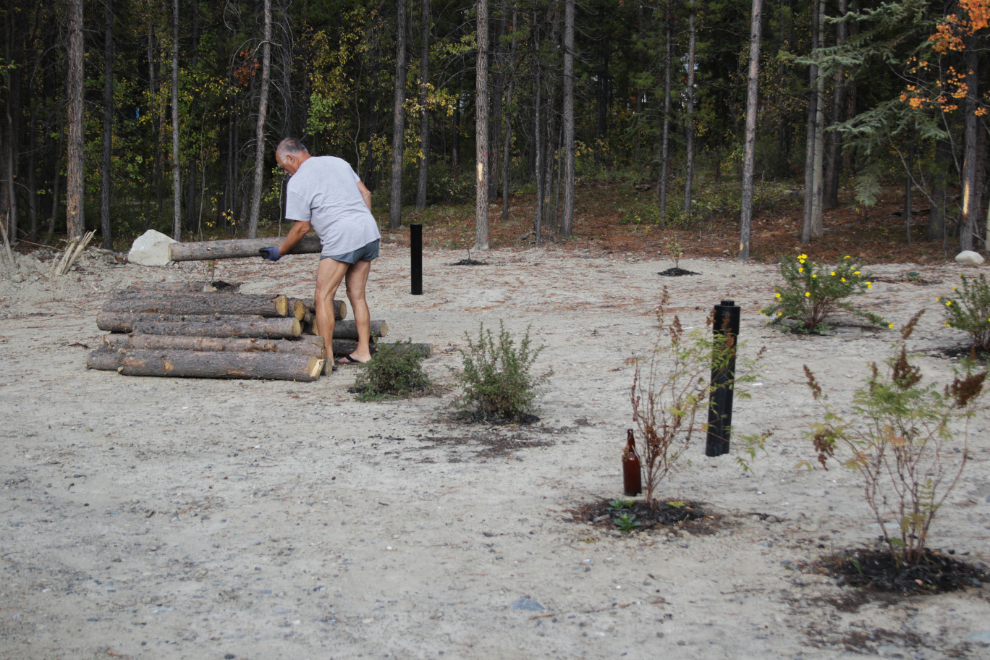
I said I was finished getting any more plants… but then Decora got their Fall bulbs in. How much work could 60 crocus bulbs be? 🙂
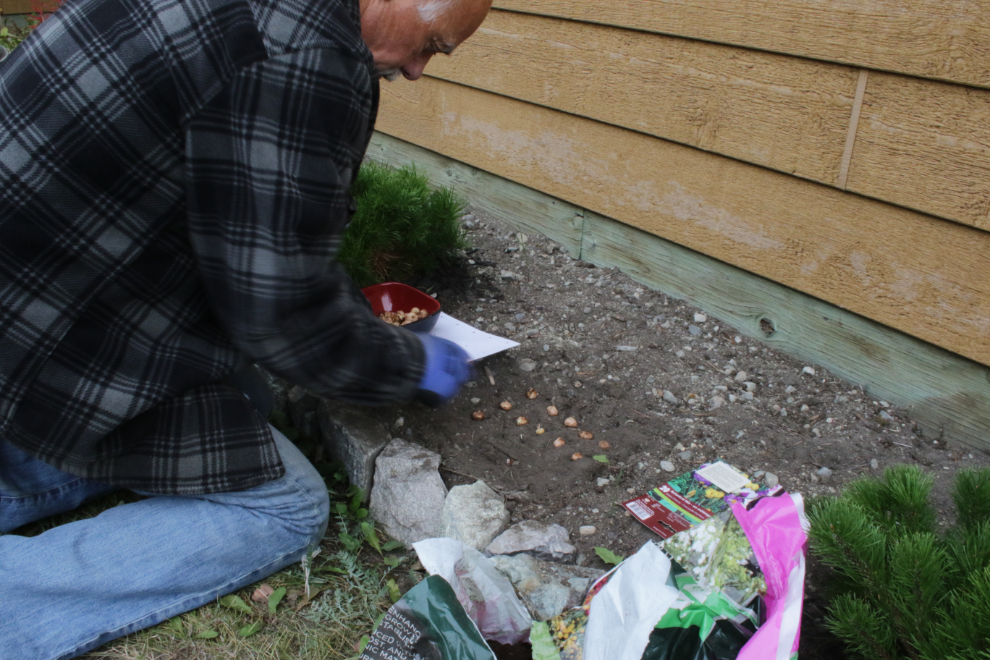
While digging in those bulbs I found some “dead sticks” buried, that were now sprouting. This is a dandelion. I was going to transplant some very large and healthy dandelions from my lawn to the bee garden, but simply ran out of steam.
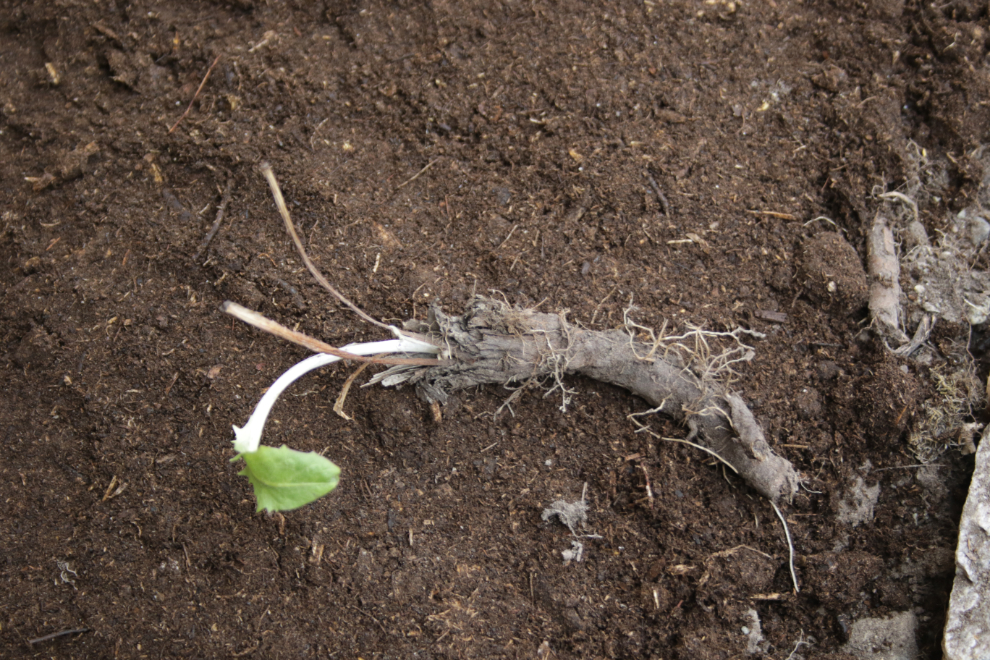
Seeing white clover seed at Decora while there for a Fall gardening workshop on September 17th, I decided to spread a couple of pounds of it around the bee garden, the corral, and an area along the driveway near the road, both in the hopes of adding some ground cover and adding some nitrogen to the dirt, or whatever the correct name for this stuff is.
The final photo shows the bee garden as seen from the basement on September 29th. As of right now, it’s covered by about 3 inches of fresh snow.
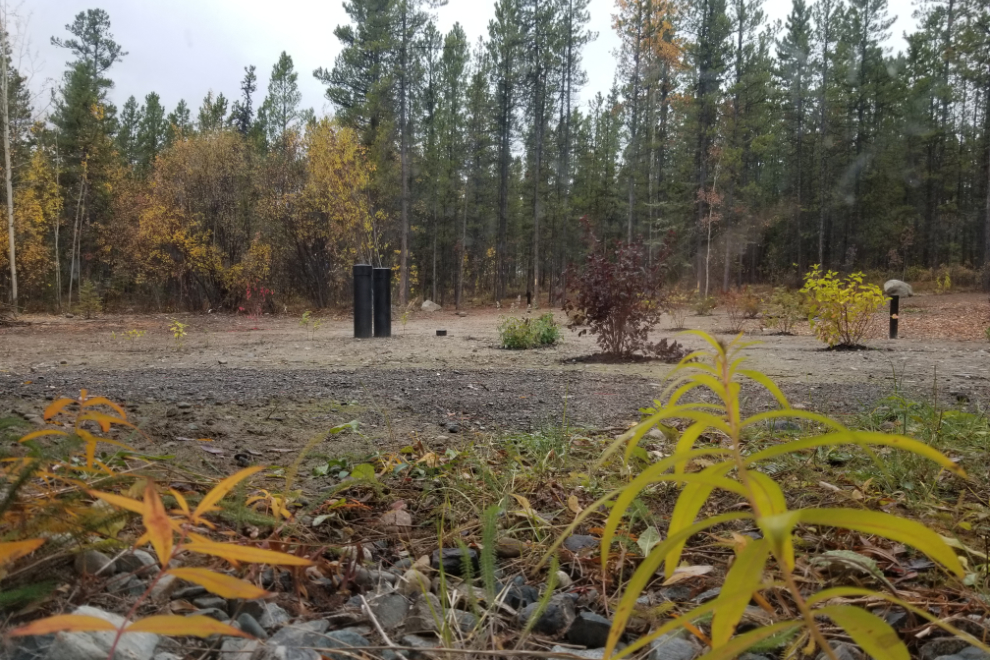
While this was a very different summer than any I’ve ever had before, I’m pleased with the way the project went, and I’m really looking forward to seeing what Mother Nature does with it in the Spring. Although I was unable to develop a plan for the bee garden or the landscaping out front, the seat-of-the-pants method worked out okay. And I try to keep in mind that I’m 73 in three weeks, so even though some days I needed three showers and three recovery naps, I did okay, too.
At noon tomorrow (Friday, October 6th), Cathy and I are flying to Vancouver. On Saturday we’ll board Holland America’s gorgeous Koningsdam for a 17-day cruise to Hawaii and back. I hope to have some things to tell you about that are much more interesting than gardens in a few days 🙂
(as this relates to your septic project and subsequent endless hours of reworking that septic field area) One of my favorite sayings as a oft put upon teenager helping my father hand clear acres of CA Sierra scrubland.. “hard to remember when you are up to your neck in alligators, that your initial objective was only to drain the swamp!”
Haha – I did perhaps get a little carried away!